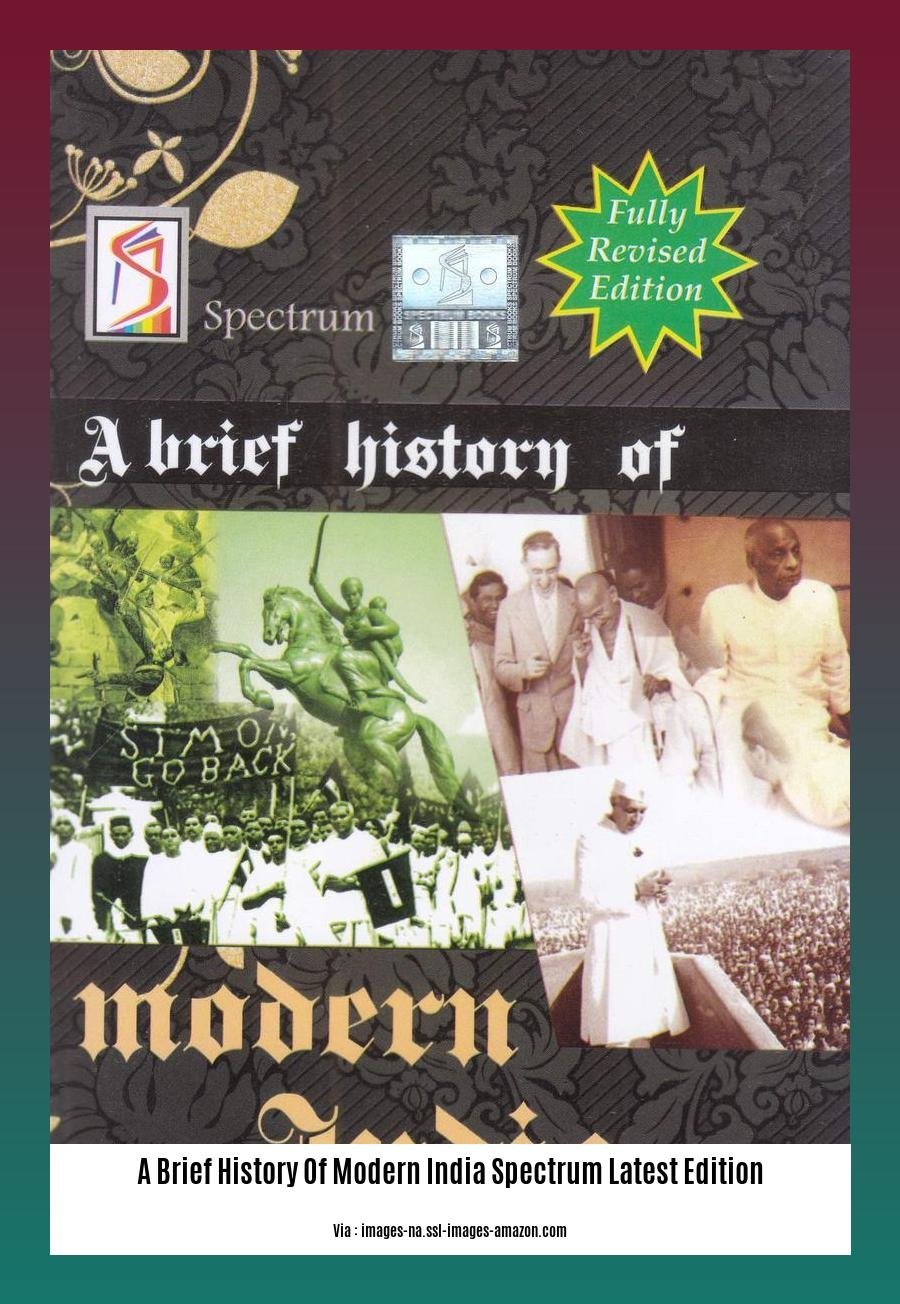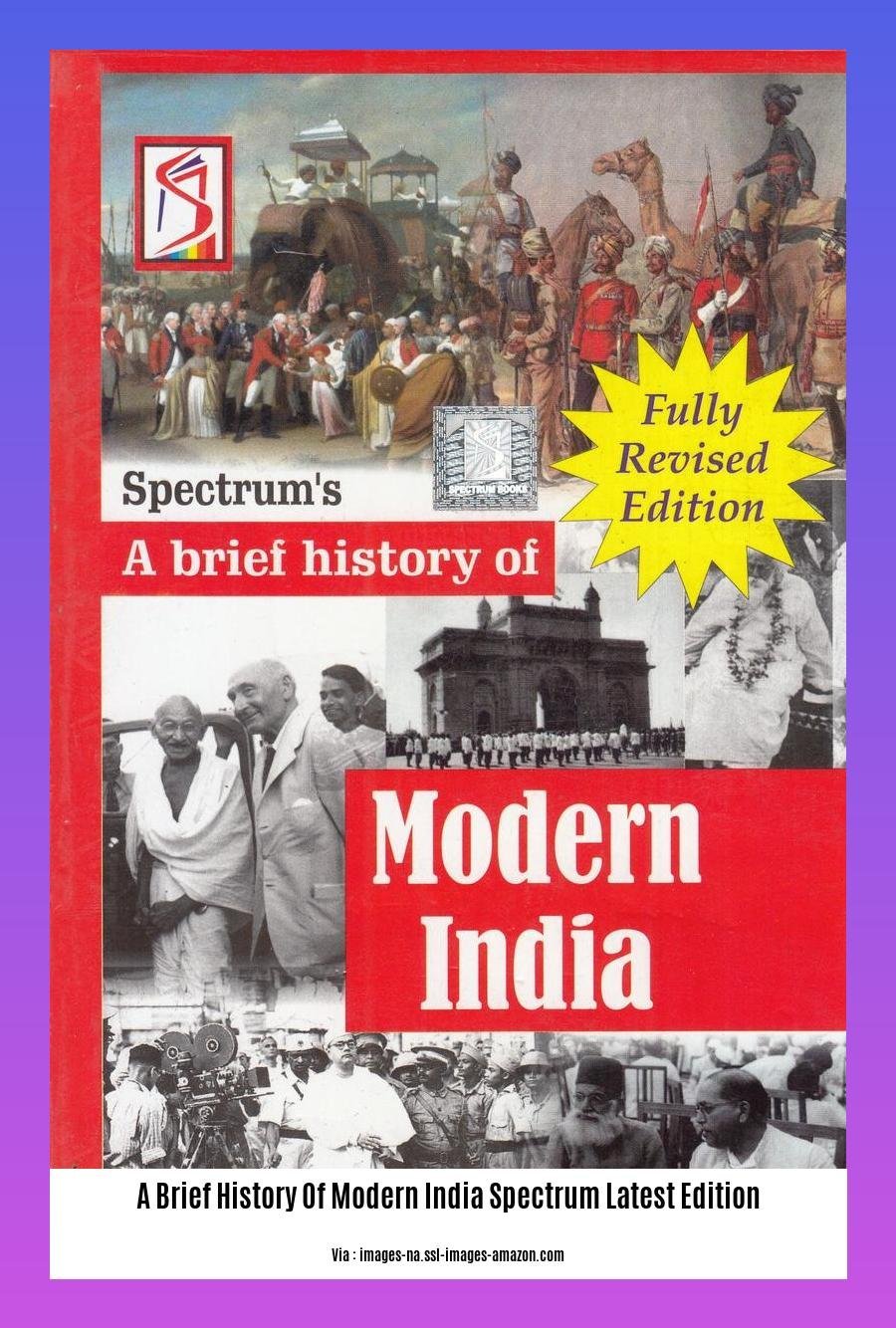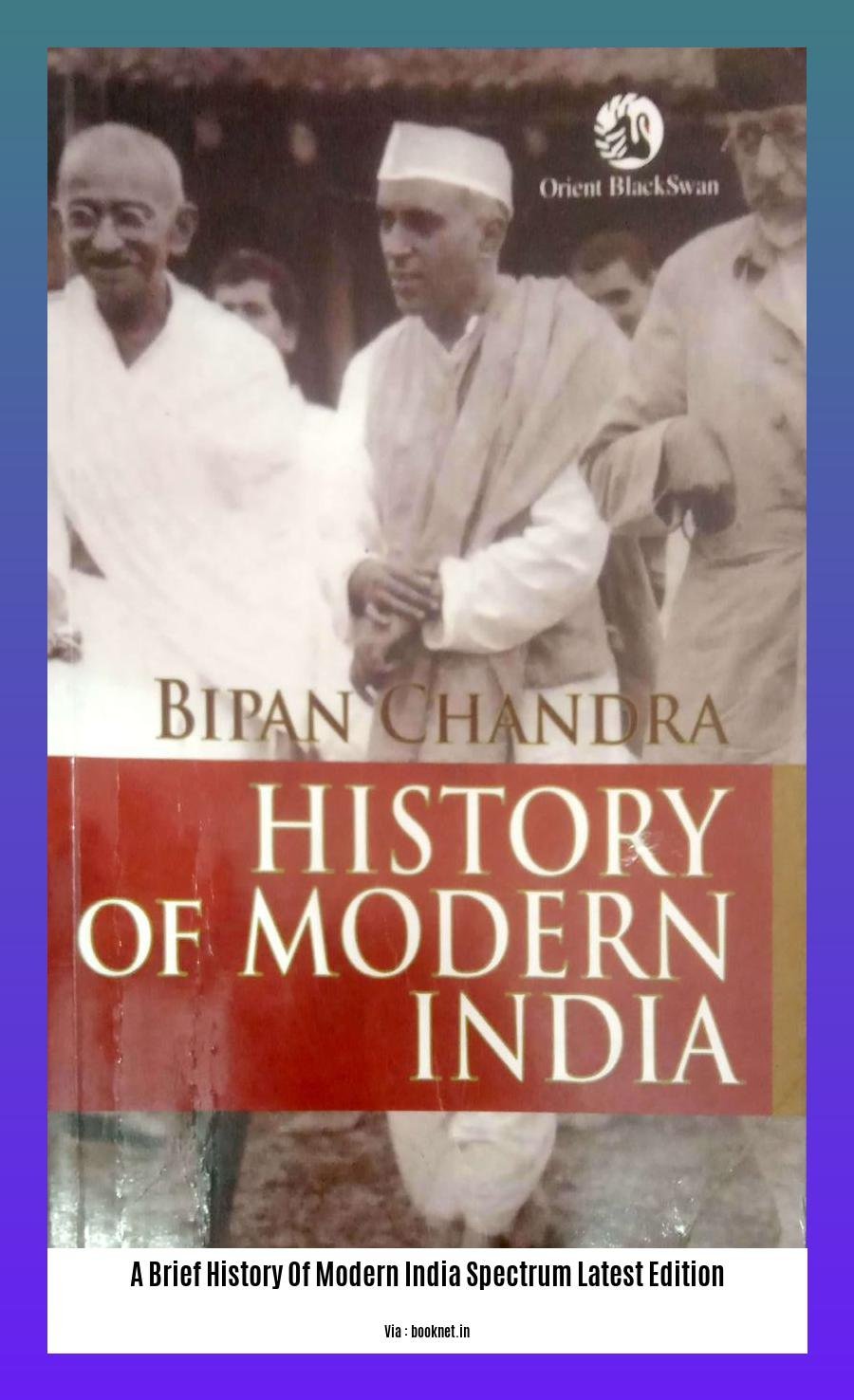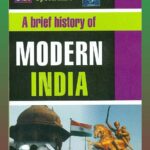Immerse yourself in the intricate world of Indian politics with the latest edition of Modern India Spectrum: A Brief History. This comprehensive guide unveils the rich tapestry of Indian political history, providing a deep dive into the country’s diverse political parties, ideologies, and electoral battles. Discover the fascinating evolution of modern India’s political landscape and gain insights into the forces that shape its future.
Key Takeaways:
- Rajiv Ahir’s “A Brief History of Modern India” offers a comprehensive chronicle of India’s past, spanning from the arrival of Europeans to the dawn of independence.
- The book delves into the political, social, and economic factors that molded modern India, including the surge of nationalism and the subsequent independence movement.
- It sheds light on the challenges confronted by India as a newly independent nation, as it navigated the complexities of post-colonial governance.
A Brief History of Modern India Spectrum: Latest Edition

The journey of India’s political evolution from independence to modern times.
The Modern India Spectrum is a captivating journey through time, delving into India’s transformation from colonial rule to a vibrant and multifaceted democracy. Rajiv Ahir’s book “A Brief History of Modern India” serves as a comprehensive guide to this remarkable evolution.
The book chronicles the following key stages:
1. The Arrival of Europeans:
– The initial European presence in India primarily for trade purposes.
– The establishment of the British East India Company and its growing political influence.
2. The Rise of Nationalism:
– The Indian National Congress (INC) was formed in 1885 as a platform for political expression.
– The emergence of leaders like Mahatma Gandhi, Jawaharlal Nehru, and Subhash Chandra Bose.
– The Swadeshi and Non-Cooperation Movements challenged British rule.
3. The Indian Independence Movement:
– The Quit India Movement of 1942 was a pivotal moment in the freedom struggle.
– The formation of the Azad Hind Fauj (Indian National Army) by Subhash Chandra Bose.
– The struggle for independence culminated in 1947 with the partition of India and Pakistan.
4. The Challenges of Independence:
– The post-independence era brought numerous challenges, including communal violence, refugee influx, and economic disparities.
– The Constituent Assembly drafted a comprehensive constitution establishing a democratic republic.
– India’s transformation into a modern, self-reliant nation.
5. Contemporary India:
– The book explores India’s economic rise, technological advancements, and its growing influence on the global stage.
– It examines the current political landscape, including the rise of regional parties and the challenges of social and economic inequality.
The Latest Edition.
– This updated edition includes an analysis of recent developments, such as the impact of globalization, the rise of digital technologies, and the changing nature of India’s relationships with its neighbors and global powers.
– It also explores the implications of these developments for India’s future, including the challenges and opportunities it faces as a modern and vibrant democracy.
Throughout the book, Ahir provides a nuanced analysis of India’s political, social, and economic developments. His thorough research and engaging writing style make the book an invaluable resource for anyone seeking to understand contemporary India.
Apple Computer History Timeline showcases significant milestones that shaped the revolutionary technology and innovation that made the company what it is today.
A Brief History of **Modern India Spectrum: Latest Edition** PDF

Understanding the evolution of modern India requires a comprehensive examination of its historical foundations. The Modern India Spectrum, a renowned publication by Rajiv Ahir, offers a detailed account of India’s journey from the arrival of European powers to its emergence as an independent nation.
Historical Overview
- The book commences with an exploration of India’s pre-colonial era, highlighting the significant empires and dynasties that shaped the subcontinent’s cultural and political landscape.
- It then delves into the arrival of European trading companies, shedding light on their colonial ambitions and the subsequent establishment of British rule in India.
- The Modern India Spectrum meticulously examines the rise of the Indian independence movement, chronicling the pivotal events, leaders, and ideologies that fueled the struggle for freedom.
- The book dedicates a substantial section to the post-independence period, analyzing the challenges faced by a newly independent nation, including partition, nation-building, and economic development.
Key Themes and Concepts
- Colonialism and Imperialism: The book provides a nuanced understanding of the impact of colonialism on India’s political, economic, and social structures. It sheds light on the exploitative policies implemented by the British Raj and the resistance they engendered.
- Nationalism and the Freedom Movement: Ahir delves into the evolution of Indian nationalism, tracing its roots from early reformers to the formation of the Indian National Congress. The book highlights the role of prominent leaders, such as Mahatma Gandhi and Jawaharlal Nehru, in mobilizing mass support for independence.
- Partition and Nation-Building: The Modern India Spectrum examines the complex process of partition, its consequences for the subcontinent, and the challenges confronted by India in forging a unified national identity.
- Economic Development and Social Transformation: The book analyzes India’s post-independence economic policies, including the adoption of socialism and the subsequent shift towards liberalization. It also explores the significant social changes that have occurred in areas such as education, healthcare, and gender equality.
Significance and Impact
- The Modern India Spectrum is widely regarded as an indispensable resource for students preparing for competitive exams such as the UPSC and State PCS examinations. Its comprehensive coverage of modern Indian history makes it a valuable tool for gaining a thorough understanding of the subject.
- The book’s lucid writing style, coupled with its in-depth analysis, has made it a popular choice among students and researchers alike. It has been extensively cited in academic works and is considered a standard reference for modern Indian history.
Key Takeaways:
- The Modern India Spectrum provides a comprehensive overview of India’s history from the pre-colonial era to the present day.
- It examines the impact of colonialism, the rise of nationalism, the freedom movement, partition, and nation-building.
- The book analyzes India’s post-independence economic policies and social transformation.
- The Modern India Spectrum is considered an essential resource for students preparing for competitive exams and is widely used by researchers and academics.
Citations:
[1] A Brief History of Modern India (Spectrum) by Rajiv Ahir – IAS Notes:
[2] Spectrum Modern History PDF – Civilsdata:
FAQ
Q1: What is the scope of Rajiv Ahir’s book, “A Brief History of Modern India”?
A1: Rajiv Ahir’s “A Brief History of Modern India” comprehensively explores India’s history from the arrival of Europeans to its independence, examining political, social, and economic factors that shaped modern India.
Q2: What are the key themes covered in the book?
A2: The book focuses on the rise of nationalism, the Indian independence movement, and the challenges faced by a newly independent nation, providing a detailed analysis of these significant historical developments.
Q3: Why is this book considered valuable for UPSC and State PCS examinations?
A3: The book’s comprehensive coverage of modern Indian history makes it an essential resource for candidates preparing for the Modern History section of these competitive exams.
Q4: Where can I find the latest edition of “A Brief History of Modern India” in PDF format?
A4: The latest edition of Rajiv Ahir’s “A Brief History of Modern India” in PDF format can be found on various online platforms, including IAS Notes and Civilsdata.
Q5: What are some other resources available for studying modern Indian history?
A5: In addition to “A Brief History of Modern India,” several other resources are available for a deeper understanding of the subject, such as textbooks, reference books, and online courses offered by reputable institutions.
- Georgia Platform: A Southern Strategy, 1850s - March 31, 2025
- How many weeks is 40 days: Quick Conversion Guide for Accurate Results - March 31, 2025
- How many feet is 300 meters? 984 Feet: Understand Length Conversions Easily - March 31, 2025
















